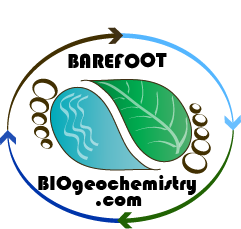Gas for thought in Kawar Ijen crater-lake, Indonesia
Author: Paul Macklin
Recently, a last second invitation from a friend, led me on a sudden, chaotic drive through the west coast of Bali, followed by a sleepy ferry trip peering into the deep blue waters of the Java Strait; a breathtaking drive through Mount Bromo, before finally relaxing for a riverside dinner under a large tree next to Banyupahit River in the Kawar Ijen region of East Java.
Further upstream from our resting spot, the deep magmatic sulfuric acid waters were seeping into the 200 metre deep Kawar Ijen, before connecting to receiving rivers and springs. Unknowingly (as a habit of curiosity, with a banana in one hand) due to the yellowish-green colour of the river water, I dabbed a generous serving of the world’s most highly acidic magmatic water onto my tongue. As my mouth silently sizzled away, my previous views of groundwater, as a palatable concoction, were quickly fading away.
The lesson of the burning tongue was emphasized further when we visited the Kawar Ijen crater lake after a challenging 3 hour walk in the darkness very early the next morning. On arrival my first thought did not involve the undeniable beauty of the lake, but rather, the safety of our small group, particularly myself. “Has this erupted recently?”….I coughed, before putting my makeshift gas mask on. With the combination of the lava, the fluorescent bubbling of the lake and the clouds of sulfur gases invading my early morning torch light, to say things were looking pretty unstable was an understatement.
The next day, exhausted, and lying down in the safety of my air-con room, I reflected on how my global lake and groundwater chemistry perspectives had changed with my introduction to this “highly polluted” and “natural” lake. Recent scientific biogeochemical research has tended to bundle global lakes into broad-ranged inventories, but this may become tricky when applied to groundwater and inland waters, particularly in understudied tropical volcanic regions. Perhaps we should be more careful when upscaling variables in these regions or maybe begin to invest in research initiatives which combine research specialties (like our own) with remote sensing technologies for a more rapid assessment of hard-to-access zones. Have a great 2017 all!
Interesting links for Kawar Ijen:
National Geographic, Stunning Electric-Blue Flames Erupt From Volcanoes:
Kawah Ijen Volcano, Blue flames and the largest highly acidic lake in the world.
http://geology.com/volcanoes/kawah-ijen/
Science Alert, Welcome to the largest, most highly acidic crater lake in the world
Mount Bromo smoking away on the road to Ijen. Photo: Michael Ishak
Banyupahit River with drone. Photo: Paul Macklin
Kawar Ijen Blue flame at night.



